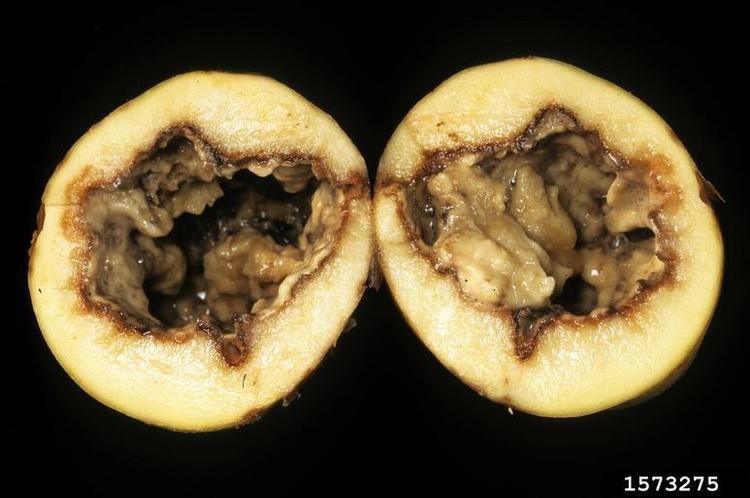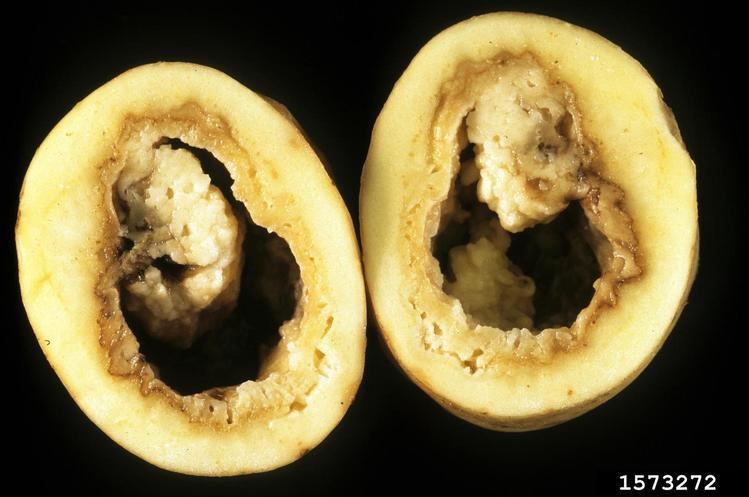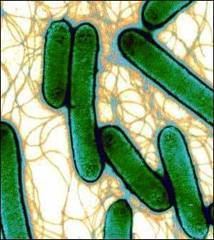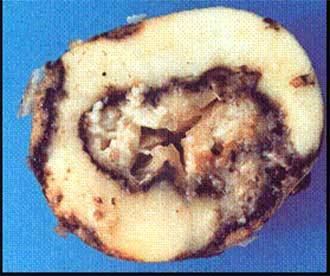Order Enterobacteriales Rank Species | Family Enterobacteriaceae Higher classification Pectobacterium | |
 | ||
Scientific name Pectobacterium carotovorum Similar Erwinia, Bacteria, Pectobacterium, Dickeya dadantii, Dickeya | ||
Pectobacterium carotovorum hr in nicotiana benthamiana
Pectobacterium carotovorum is a bacterium of the family Enterobacteriaceae; it used to be a member of the genus Erwinia.
Contents
- Pectobacterium carotovorum hr in nicotiana benthamiana
- Medical vocabulary what does pectobacterium carotovorum mean
- References

The species is a plant pathogen with a diverse host range, including many agriculturally and scientifically important plant species. It produces pectolytic enzymes that hydrolyze pectin between individual plant cells. This causes the cells to separate, a disease plant pathologists term bacterial soft rot. Specifically, it causes beet vascular necrosis and blackleg of potato and other vegetables (hence the name carotovora – "carrot-eater"), as well as slime flux on many different tree species.

This bacterium is a ubiquitous plant pathogen with a wide host range (carrot, potato, tomato, leafy greens, squash and other cucurbits, onion, green peppers, African violets, etc.), able to cause disease in almost any plant tissue it invades. It is a very economically important pathogen in terms of postharvest losses, and a common cause of decay in stored fruits and vegetables. Decay caused by P. carotovora is often referred to as "bacterial soft rot" though this may also be caused by other bacteria. Most plants or plant parts can resist invasion by the bacteria, unless some type of wound is present. High humidity and temperatures around 30°C favor development of decay. Mutants can be produced which are less virulent. Virulence factors include: pectinases, cellulases, (which degrade plant cell walls), and also proteases, lipases, xylanases, and nucleases (along with the normal virulence factors for pathogens – Fe acquisition, LPS integrity, multiple global regulatory systems).

